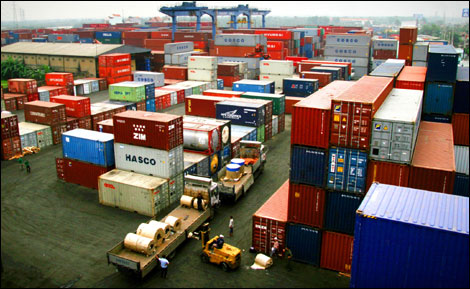The goal by 2025 is to develop a system of inland ports capable of handling about 20% - 30% of the demand for import and export container transport with a total capacity of about 6 - 8.7 million Teu/year.

The Vietnam Maritime Administration has just submitted to the Ministry of Transport for appraisal the "Planning for the development of the inland port system in the period of 2021 - 2030, with a vision to 2050". Notably in this report, the Vietnam Maritime Administration has setting specific goals by 2025: Developing a system of inland ports capable of handling about 20% - 30% of the demand for import and export container transport with a total capacity of about 6 - 8.7 million Teu/ year.
Up to now, the whole country has invested, announced and put into operation 10 inland container depots, 6 inland clearance ports - ICDs are operating in the locations planned for inland ports but the investors have not carry out the procedures for converting into an inland port according to regulations. ICD ports are distributed concentratedly on 5 corridors and economic zones out of a total of 15 corridors and economic areas with inland port planning.
In the Northern region, there are 9 dry ports including Hai Linh, Mong Cai, Tan Cang Dinh Vu, Dinh Vu - Quang Binh, Hoang Thanh, Ha Nam New Port, Que Vo New Port, Phuc Loc and Long Bien; 5 ICDs include Tien Son, Thuy Van, Lao Cai, My Dinh, Hai Duong.

In the South, there is only one inland port, Nhon Trach Tan Cang and 9 ICDs including Phuoc Long, Transimex, Sotrans, Southwest (Tanamexco), Phuc Long, Tan Cang Long Binh, Song Than, Bien Hoa and TBS - Tan Van .
The total volume of goods imported and exported by container through the exhausted and active ICD is currently around 4.2 million TEU/year.
According to the Vietnam Maritime Administration, airlines in the South promote the priority of transport inland waterways (accounting for 35-40%), good support for the sea in transshipment of import and export goods. by containers, reducing congestion at sea and urban traffic in the city area. Ho Chi Minh.
The northern lowlands are not connected to the sea as clearly as the southern region because the container shipping market by sea is about 30% of that of the South. Besides, the sea in the North region does not have frequent traffic jams. Goods are not required to be transported through a dry port to reach the sea like the South, so the rate of using ships and domestic information in the North is low.
specifically, by 2025: The system is fully developed, capable of handling about 20% - 30% of the demand for import and export container transport with a total capacity of about 6 - 8.7 million Teu/year. .
In which, the North consists of channels and clusters of accounts with a capacity of about 2.2 - 3.0 million Teu/year; The Central - Central Highlands have shallow canals and shallow groups with a capacity of about 0.24 - 0.37 million Teu/year; The South has shallow canals and financial clusters with a capacity of about 3.5 - 5.3 million Teu/year.

By 2030, the exhausted development system is capable of handling about 25% - 35% of the demand for import and export container cargoes along the transport corridors. Forming shallow channels, shallow groups with a total capacity of about 11.6 - 15.7 million Teu/year.
In which, the North includes channels and resource clusters with a capacity of about 4.2 - 5.5 million Teu/year; Central and Central Highlands have shallow canals and shallow groups with a capacity of about 0.66 - 0.95 million Teu/year; The South has shallow canals and clusters of accounts with a capacity of about 6.8 - 9.3 million Teu/year.
Orientation to 2050, the country will develop the exhausted system to become the focal point for organizing transportation, transshipment and distribution of goods, combined with the provision of logistics services, capable of passing about 30% - 35% of the demand for containerized goods is imported and exported along the transport corridor, and at the same time meets the demand for logistics services in the localities.